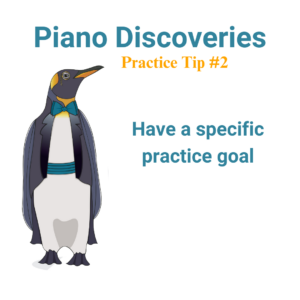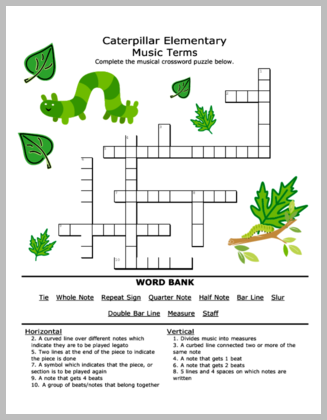 Quality practicing is far superior to quantity (time) practicing! And one of the best ways to make progress during practice time is to have a specific practice goal. This allows you to stay focused, only work on the things needed for that goal, and to make maximum progress in minimum time. Here are some ideas for realistic practice goals (beginner-intermediate level students):
Quality practicing is far superior to quantity (time) practicing! And one of the best ways to make progress during practice time is to have a specific practice goal. This allows you to stay focused, only work on the things needed for that goal, and to make maximum progress in minimum time. Here are some ideas for realistic practice goals (beginner-intermediate level students):
- Commit to memory the next musical phrase (4-8 measures).
- Practice reading the note names for 4 measures. Look at the intervals. Clap and count the rhythms. Slowly play 4 measures. Get those 4 measures comfortable to play. (And save the rest of the piece for later practice sections).
- Warm up with technique exercises and then work specifically on tone quality for x-section in one piece.
- Use the entire practice time specifically addressing relaxation at the piano (while sitting, while playing, etc). Staying and/or returning to relaxed is the main focus.
- Work on the most difficult phrase in the piece, only. Examine the notes, rhythms, chords, intervals, hand position needed to play the phrase comfortably, etc. Work the section slowly. Hands separately, and then together. Get it comfortable in your hands, but not increase speed (until a future practice time).
- And other ideas such as this.
Having a specific goal in mind helps students to remain focused. Teachers can help students learn how to make a weekly practice goal work into smaller daily goals and/or smaller individual practice goals for the week. If teachers help students remember that quality practice is always better to quantity (time) practice, and support the students in creating realistic goals, then faster progress with happen!
